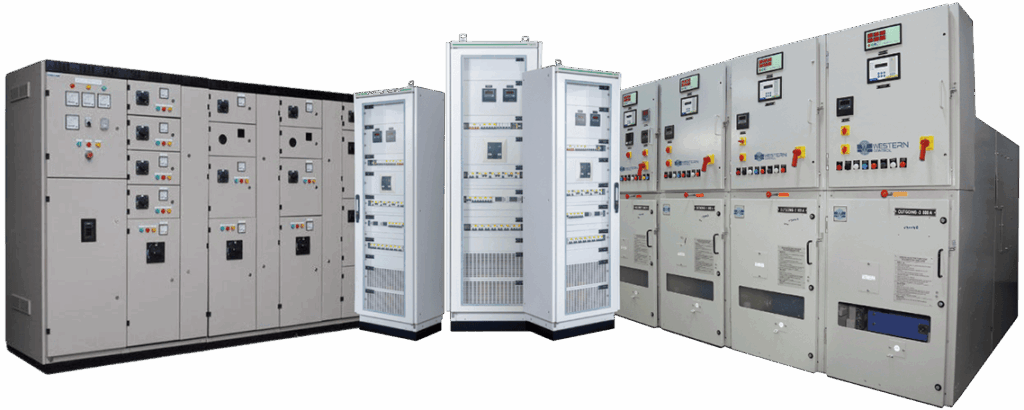In today’s fast-paced industrial environment, the demand for safe, efficient, and reliable power distribution is higher than ever. As factories, plants, and commercial buildings expand operations and increase power consumption, it has become essential to upgrade outdated systems with modern technology. One of the most crucial components of this upgrade is the installation of HT Panels—a powerful solution that handles high voltage loads efficiently. Another essential product in the modern power infrastructure landscape is the Ring Main Units (RMU). Though both serve unique roles, together they help build a secure and uninterrupted power distribution network.
This article explores the major reasons industries are rapidly moving towards HT Panels and also sheds light on the complementary role played by Ring Main Units (RMU) in modern infrastructure. If you’re planning an upgrade or want to future-proof your facility’s power setup, understanding these technologies is a vital step.
What Are HT Panels?
HT Panels, or High Tension Panels, are switchgear systems used to regulate, protect, and control electrical power systems operating above 11 kV and up to 33 kV. These panels are a part of the high-voltage power distribution network, ensuring that electricity flows securely from the utility grid or transformers to various loads like machinery, lighting, HVAC systems, and more.
Engineered to handle high current and voltage levels, HT Panels provide critical functionalities such as circuit isolation, fault protection, and load management. Their rugged construction, intelligent automation capabilities, and safety-focused design make them ideal for heavy-duty industrial applications.
1. Enhanced Safety for Equipment and Workers
Safety remains the top priority in any industrial setup. HT Panels are specifically designed with advanced protection features like vacuum circuit breakers (VCBs), relays, and interlocking mechanisms. These features detect and isolate faults such as short circuits, overloads, and earth faults almost instantly.
By minimizing the risk of electrical fires, arc flashes, and accidental exposure to high voltage, HT Panels create a secure environment for personnel and extend the life of connected machinery. The assurance of a protected electrical system encourages businesses to invest confidently in large-scale automation and energy-intensive machinery.
2. Efficient Power Distribution Management
A modern industrial unit may have several power-hungry processes running simultaneously. Without a streamlined way to control energy flow, you risk inefficient consumption, high power bills, and system failure. HT Panels manage the distribution of high-tension power to different areas of your facility with absolute precision.
They allow better control over which part of the system receives how much power, helping avoid load imbalance. This smart load management not only reduces energy waste but also enhances the overall efficiency of your electrical infrastructure.
3. Long-Term Cost Savings
Although the upfront investment in HT Panels can be significant, the long-term savings easily justify the cost. By protecting critical assets, reducing downtime, and lowering the risk of damage, HT Panels prevent costly repairs and production interruptions.
Additionally, their ability to integrate with energy monitoring systems helps companies optimize their consumption patterns, reduce peak demand charges, and keep operating costs under control.
4. High Customizability and Scalability
Industrial operations are not static—they grow, change, and evolve. HT Panels are available in multiple configurations and can be tailored to meet specific voltage, current, and environmental requirements. Whether you need outdoor, indoor, single panel, or modular setups, manufacturers offer a range of customization options.
This flexibility makes HT Panels a future-proof investment, allowing industries to scale operations without needing a complete overhaul of their electrical infrastructure.
5. Easy Integration with Automation and Smart Monitoring
Modern HT Panels are not just passive hardware units. Many come with intelligent features like digital relays, programmable logic controllers (PLCs), remote monitoring, and communication protocols such as SCADA. These capabilities make it possible to monitor system health in real time, log performance data, and even operate panels remotely.
This smart integration empowers facility managers to make data-driven decisions, conduct predictive maintenance, and reduce the frequency of manual inspections.
6. Reduced Downtime and Quick Fault Isolation
In any industrial setting, time is money. Unplanned outages lead to production delays, contract losses, and reputational damage. HT Panels are built to isolate faults quickly and safely without affecting other parts of the system. This sectional fault isolation prevents the entire network from shutting down.
For example, if one area of your plant experiences a fault, the HT Panel ensures that other critical areas continue operating smoothly. This localized fault management capability is a major driver behind the increasing demand for HT Panels across manufacturing units, data centers, and commercial complexes.
7. Compact and Space-Saving Designs
Older switchgear systems are often bulky and require large dedicated spaces, making them unsuitable for space-constrained modern facilities. Today’s HT Panels are compact, modular, and designed for space optimization.
They offer maximum functionality in minimal footprint, which is particularly useful for facilities in urban areas or vertical constructions where every square foot matters. The availability of wall-mounted and cubicle-type configurations provides additional layout flexibility.
8. Compliance with Industry Standards and Regulations
Modern HT Panels are manufactured according to stringent international and local safety standards such as IEC, IS, and ANSI. Using certified HT Panels ensures that your facility remains compliant with government safety codes and avoids penalties during inspections.
Moreover, insurance companies often look favorably on businesses that invest in standard-compliant electrical infrastructure, which may result in lower premiums and easier claim processes.
The Role of Ring Main Units (RMU) in Power Systems
While HT Panels manage high voltage distribution within an industrial facility, Ring Main Units (RMU) act as a key link in the medium-voltage network, particularly in urban and compact power systems. RMUs are fully sealed, gas-insulated switchgear systems designed to ensure continuous power supply in case of a fault. They are widely used in secondary distribution systems, often found in ring-type networks.
Why Industries Are Also Adopting Ring Main Units (RMU)
Ring Main Units (RMU) have gained immense popularity in industrial and commercial applications due to their ability to provide uninterrupted power. Unlike traditional systems, RMUs are designed for quick fault switching and load transfer, making them highly reliable in maintaining service continuity. Their sealed design requires minimal maintenance and offers long service life, even in harsh environmental conditions.
Many industries place RMUs at strategic points in their distribution network to ensure that power can flow in either direction.
Complementary Use of HT Panels and Ring Main Units (RMU)
HT Panels and Ring Main Units (RMU) often function together in a coordinated electrical architecture. While HT Panels manage power intake and internal distribution at the facility level, RMUs ensure external power loop continuity from the utility provider. This combination offers complete protection, seamless distribution, and exceptional reliability.
Conclusion
Industries around the world are rapidly upgrading their electrical infrastructure to meet growing energy demands, enhance safety, and ensure operational efficiency. HT Panels have become a critical part of this transition, offering a perfect blend of reliability, control, and scalability.
At the same time, Ring Main Units (RMU) serve as a strong backbone in medium-voltage power networks, delivering dependable supply and easy fault management. Together, these two technologies form a modern and robust foundation for any industrial power system.






